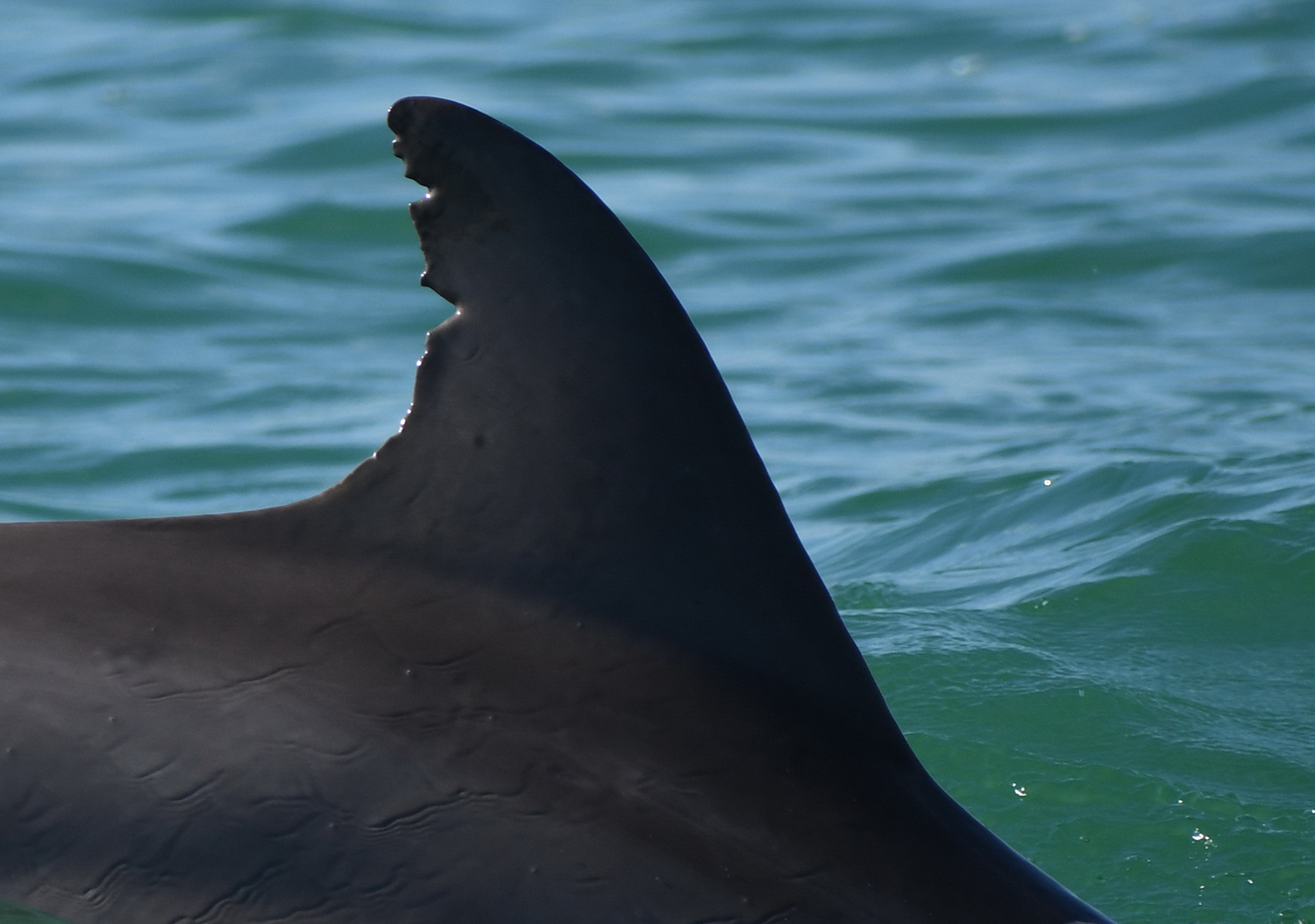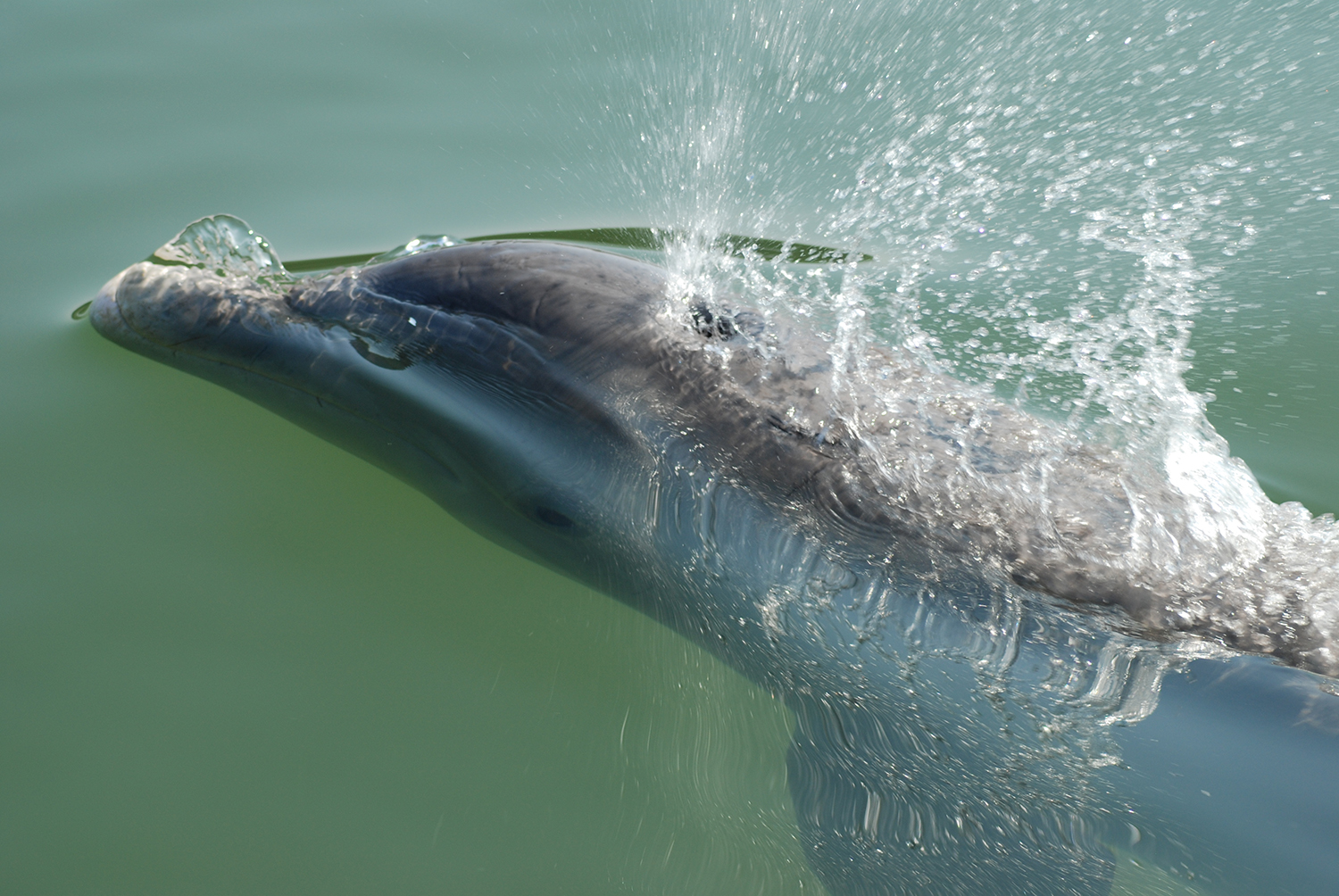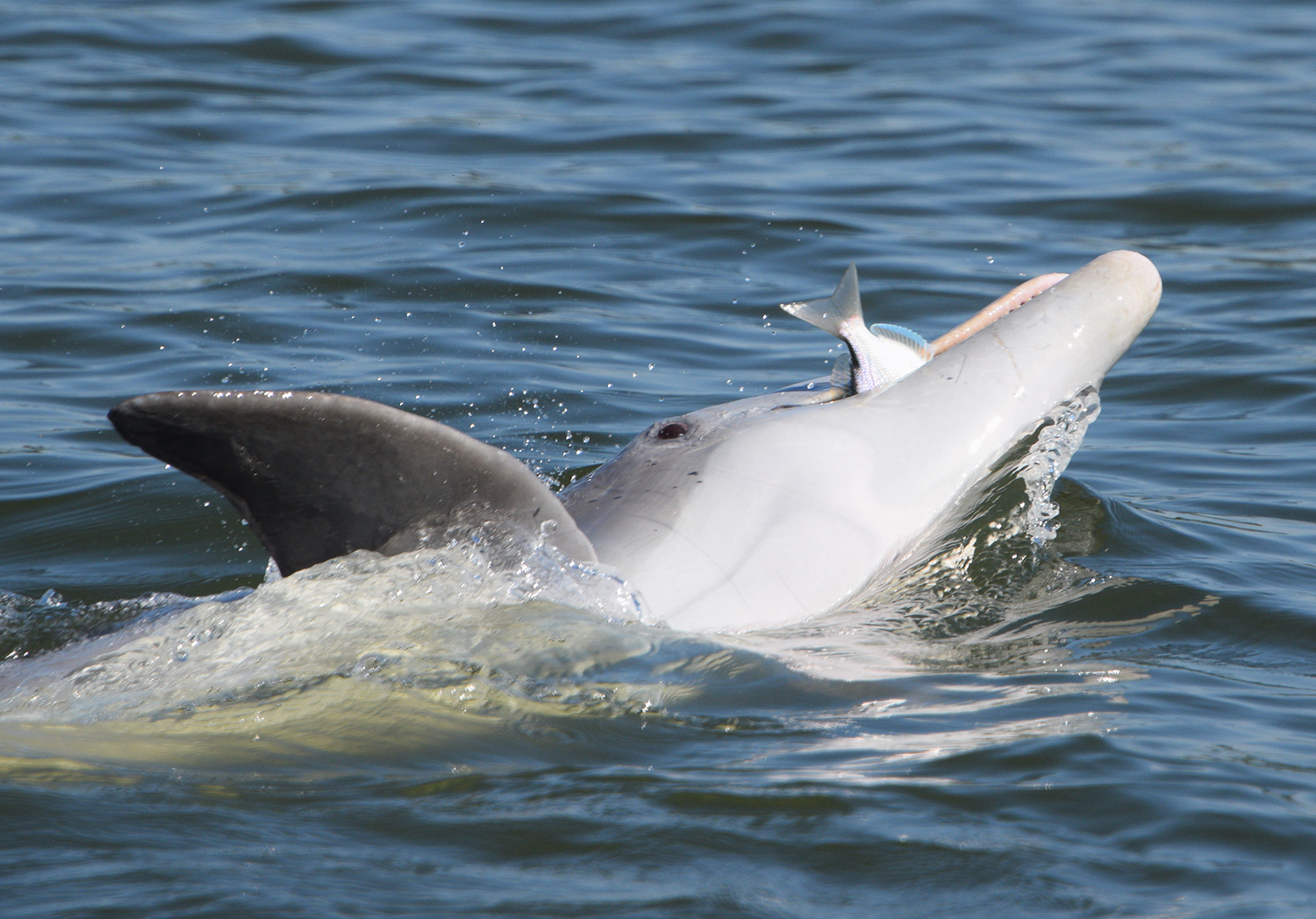Dolphin F199
Stats
Name: F199, also known as WAN2
Sex: Female
Age: Born 2002.

A Dolphin’s Life
F199 has been observed more than 450 times since June, 20, 2002. She is the second calf of Wanda, hence her nickname of WAN2. She has given birth to at least three offspring:
- Calf 1991 was born in 2011 and was observed six times. Like many first-born calves, the dolphin did not survive.
- Calf F257 (aka 1992) was born in 2013 and observed 143 times before it died in December 2017. A necropsy revealed that it had a stingray spine in one of its vertebrae.
- Calf F316 (aka 1993) was born in 2017 and observed more than 50 times. The dolphin was very thin when we saw it in February 2019. Photographs taken a month later showed that it had fishing line cutting through its fluke and had continued to lose weight. We, and several of our partner organizations, intervened to remove the fishing line on April 1, 2019. (This was done under our federal permit and with express permission from the National Marine Fisheries Service, the agency responsible for protecting wild dolphins in the U.S.)
Sadly, F199 has a sad history of human interactions. She was first observed patrolling — waiting for discarded catch from — a fishing boat just after the persistent and intense red tide algal bloom in 2005-2006. While this is not her primary feeding method, she has continued to be observed around fishing boats off and on since. She often associates with Vespa who is well-known for spending time around fishing boats. It would not be surprising if F199 undertakes risky behaviors when prey fish populations are reduced during intense red tide blooms. These behaviors put her and her calves at risk.
A Dolphin’s Voice
A Special Note About the Audio Recording
In collaboration with numerous colleagues over the past 35 years, our dolphin communication research team has collected thousands of hours of acoustic recordings from members of the resident Sarasota bottlenose dolphin community, with a focus on individually distinctive signature whistles. Recordings have been made during periodic health assessments, when we are able to obtain high-quality recordings of known individual dolphins. We are currently in the process of systematically assembling a verified signature whistle catalog, with multiple samples from each of the approximately 1,000 unique recording sessions of almost 300 individual dolphins. Members of this collaborative team, and our student researchers, come from Woods Hole Oceanographic Institution, the University of North Carolina Wilmington, University of St. Andrews, and Hampshire College. Learn more about dolphin communication.






